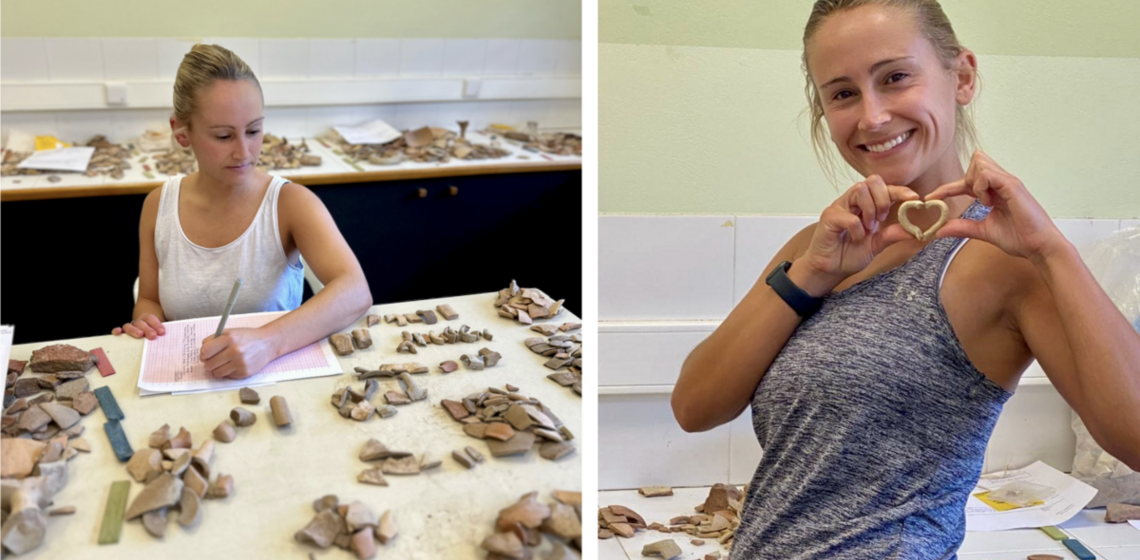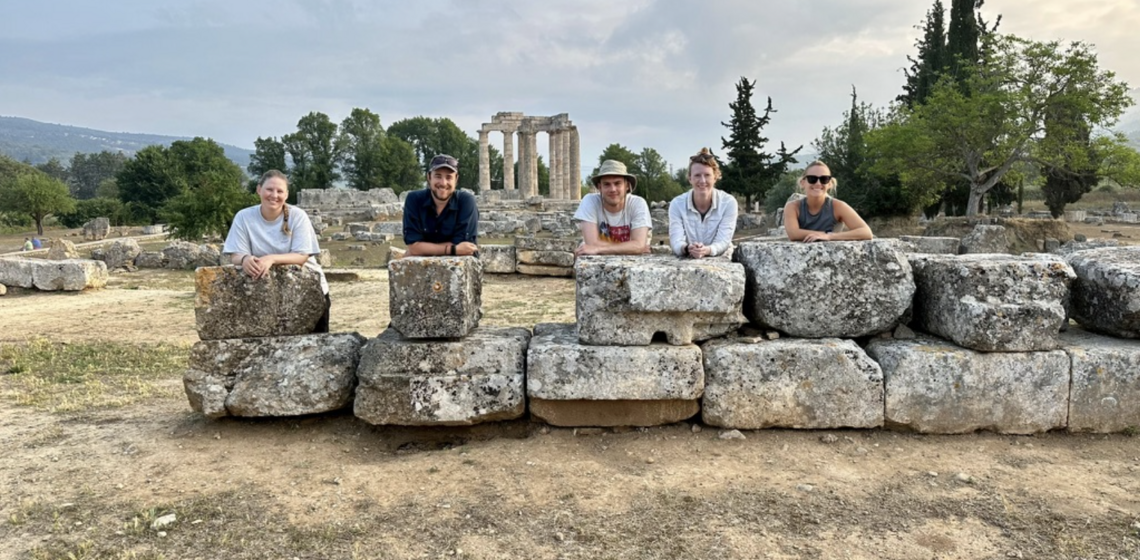Sophie Cushman is a Ph.D. candidate in Classical Archaeology in the Department of Ancient Greek & Roman Studies at UC Berkeley. Her research focuses on Aegean prehistory, with particular interest in Mycenaean mortuary practices, non-palatial communities, and material culture. Her dissertation, "Death and Taxes: Mortuary Perspectives on Non-Palatial Communities in the Mycenaean Argolid (ca. 1600–1070 BCE)," explores how small communities in the northeastern Peloponnese used chamber tombs in response to the rise of regional palatial authority during the Late Bronze Age.
Sophie has conducted fieldwork in Crete and the Peloponnese and serves as senior staff with the Nemea Center for Classical Archaeology at sites including Nemea, Aidonia, and Mycenae. She has held fellowships at the American School of Classical Studies at Athens, including the Emily Townsend Vermeule Fellowship and the Ione Mylonas Shear Advanced Fellowship. At Berkeley, she has taught courses in archaeology, ancient history, and Latin, and she currently serves as Program Director and Residential Faculty at Bowles Hall Residential College.
Sophie is spending the summer at the dig site and will publish her dissertation this August.



